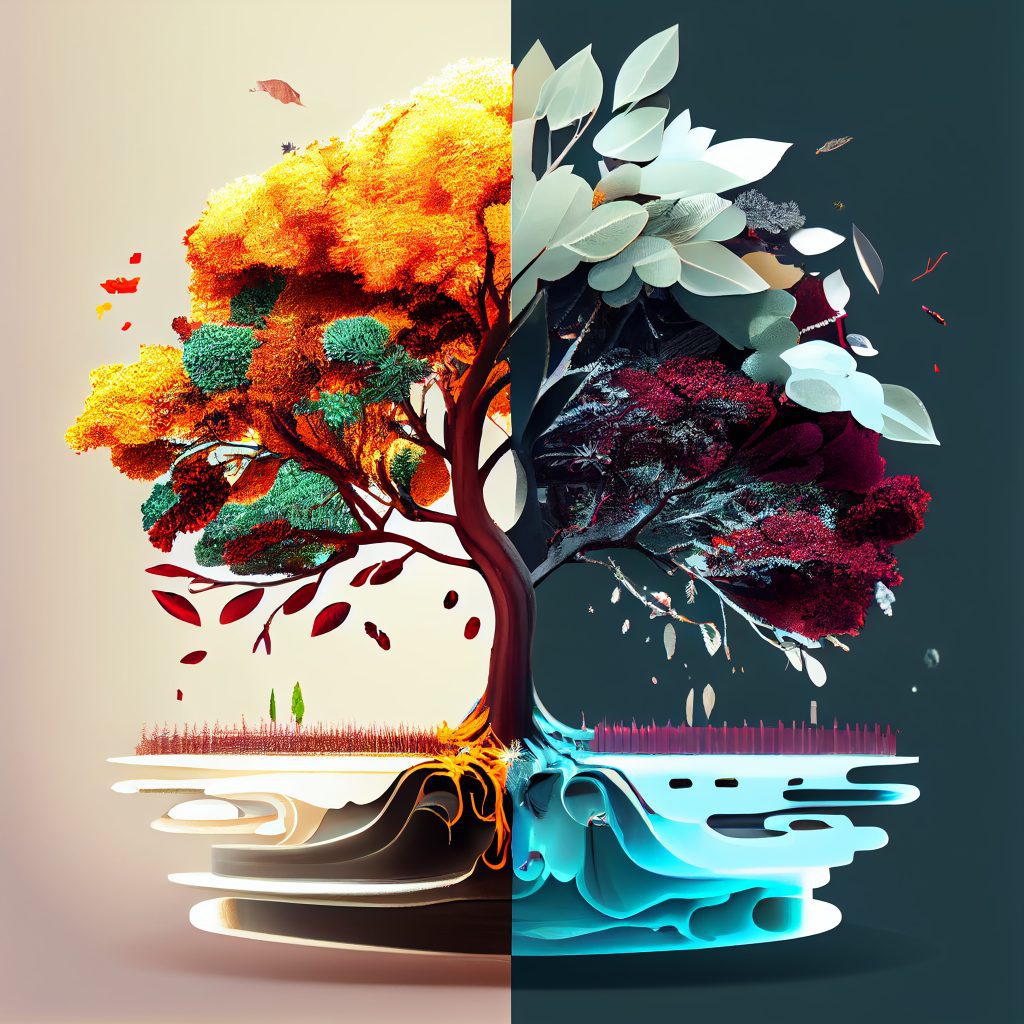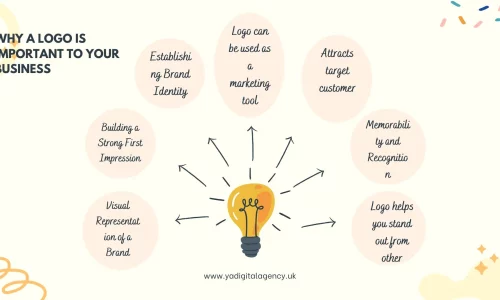Art vs. Illustration | We Break Down the Unexpected Difference Between Art and Illustration,
- yadigitalukltd
- December 10, 2023
- logo design
- Art vs. Illustration, Difference Between Art and Illustration
- 0 Comments

Difference Between Art and Illustration, though seemingly similar, have distinct qualities that set them apart. As we delve into their nuances, it becomes evident that each has its purpose, medium of expression, and impact on society. Art is often intended to convey a deeper meaning, while Illustration is usually more focused on getting a specific message or idea. Art is often seen as expressing the artist’s vision and feelings. Illustration is typically more helpful and used to illustrate a publication or product.
Introduction
Art and Illustration are two pillars of visual expression, each weaving its narrative through Difference Between Art and Illustration means. Art encompasses a broad spectrum of creative endeavours, while Illustration, in a more focused manner, communicates ideas through visuals. Art is subjective and open to interpretation, while Illustration is more definitive in its message. Art is often seen as an expression of feelings, while Illustration is more practical.
Key Difference Between Art and Illustration
Medium of expression
Art: Artists often explore diverse mediums such as painting, sculpture, and mixed media to convey their emotions and perspectives. Music: Music is a form of expression that allows people to express their feelings through sound. It can be a powerful form of communication used to create emotions and evoke certain moods. Poetry: Poetry is an art form that allows people to express their feelings and ideas concisely and vividly.
Illustration: Illustrators use drawings, digital tools, or a combination to complement textual content, aiming for clarity and visual appeal. Illustrators create visual assets that communicate a message, such as diagrams, infographics, or cartoons. They may use techniques like line drawings, colour, and shading to create the desired effect. Illustrators must be able to interpret verbal instructions and convey the desired message in their work.
Purpose and function
Art: Art seeks to evoke emotions, challenge norms, and provoke thought, often found in galleries and museums. Architecture: Architecture is a creative engineering firm that creates structures that meet society’s needs. Music: Music is an innovative form of sound designed to convey emotions and ideas. Literature: Literature is a creative form of writing focused on telling stories or expressing ideas. Dance: Dance is an innovative form of movement expressing emotions and ideas. Theatre: Theatre is a creative form of performance designed to convey emotions and ideas. Film: Film is a creative visual storytelling form expressing emotions and ideas.
Illustrations: Illustrations clarify or enhance text in books, articles, or advertisements. Photography: Photography is a creative form of capturing and presenting visual information. Music: Music is an innovative form of sound used to express emotions and ideas.
Level of reality
Art: Artists can create realistic or abstract representations, letting imagination and interpretation guide their work. Realism focuses on the representation of objects, people, and events as accurately as possible. Abstraction portrays the subject’s essence using shapes, colours, and lines. Realistic art is often more engaging and appreciated by viewers, while abstract art is more conceptual and open to interpretation.
Illustration: Precision and clarity are paramount, often requiring a more realistic portrayal to convey specific information. Realism allows for a more explicit message, while abstract art is more open-ended and open to interpretation. This makes abstract art more suitable for expressing emotions or feelings, while realism is better for conveying facts and information.
Creative Process
Art: Artists explore personal themes and emotions, allowing a more subjective and abstract creative process.
Illustration: Illustrators adhere to a brief, ensuring their work aligns with the intended message, requiring a more objective approach.
Overlapping aspects
Artistic styles
Artistic styles, such as surrealism or minimalism, can be present in art and Illustration, showcasing the versatility of visual expression.
Digital art
Advancements in technology have led to the integration of digital tools in art and Illustration, expanding creative possibilities.
Commercial applications
Artistic and illustrative styles find applications in commercial ventures, from branding to advertising, blending the boundaries between the two.
Unique characteristics
Art’s Emotional Impact
Art, with its freedom of expression, can deeply resonate with emotions, profoundly impacting individuals.
Illustration and storytelling
Often tied to narratives, Illustrations tell stories visually, making complex concepts more accessible.
Historical perspective Difference Between Art and Illustration
Evolution of art
Art has evolved through the centuries, reflecting societal changes, movements, and individual expressions.
Rise of Illustration
Historically rooted in manuscripts, Illustration has evolved into a dynamic form of visual communication, adapting to contemporary needs.
Modern trends
Contemporary art movements
Art continues to push boundaries with movements like abstract expressionism, while Illustration adapts to digital trends and modern storytelling.
Emerging Illustration Styles
Illustration evolves with evolving digital and vector illustration styles, aligning with fast-paced media and communication changes.
Role in the Media
Art in the Fine Arts
Art thrives in fine arts institutions, fostering creativity and pushing traditional artistic norms.
Illustration in editorial content
Illustration finds a niche in editorial content, enhancing articles and providing visual support to written narratives.
According to Educational paths Difference Between Art and Illustration
Art School Curriculum
Art schools emphasize self-expression, encouraging artists to explore personal narratives and styles.
Illustration courses
Illustration courses often focus on technical precision and complementing written content effectively.
Skill Set Difference Between Art and Illustration
Artists’ technical skills
Artists refine their skills in various media, mastering techniques that align with their unique creative vision.
Illustrator’s precision –
Illustrators hone precision, ensuring their work aligns with the intended message, often requiring attention to detail.
Market Demanding Difference Between Art and Illustration
Art Galleries and Exhibitions
Art maintains a strong presence in galleries and exhibitions, with collectors valuing artworks’ emotional and subjective nature.
Illustration in advertising.
Illustration finds lucrative opportunities in advertising, where clarity and visual appeal play a crucial role in conveying brand messages.
Impact on society
Art as a Cultural Expression
Art contributes to cultural expressions, providing a lens through which societies can reflect on their values and norms.
Illustrations’ popularity
Illustration’s accessibility and ability to simplify complex ideas contribute to its popularity in the mass media, reaching a broader audience.
Critique and interpretation Difference Between Art and Illustration
Art criticism
Art invites diverse interpretations and critiques, fostering discussions about aesthetics, meaning, and cultural significance.
Analyzing Illustrations
Illustrations, often serving specific purposes, are analyzed based on their ability to complement and enhance written content.
Case Studies
Famous artworks
Exploring iconic artworks like the Mona Lisa, delving into the artist’s intent and emotional impact on viewers.
Iconic illustrations
Examining illustrations like those in children’s books, highlighting their role in storytelling and enduring impact.
Frequently Asked Questions (FAQs).
What is the primary Difference Between Art and Illustration ?
Art prioritizes personal expression and emotion, while Illustration clarifies or enhances written content.
Can an artist be an illustrator and vice versa?
Individuals can fulfil both roles, but the distinction lies in their intent and function.
How has technology influenced art and Illustration?
Advancements in technology have expanded creative possibilities, introducing digital tools and various styles of art and Illustration.
Is one more financially lucrative than the other?
With its commercial applications, Illustration often offers more immediate financial opportunities than the traditional art market.
Can art and Illustration coexist in one piece?
Absolutely. Collaborative works often blend artistic and illustrative elements, creating visually compelling and meaningful pieces.
What are some notable examples & Difference Between Art and Illustration?
The “Harry Potter” illustrated edition exemplifies a successful collaboration, merging J.K. Rowling’s narrative with captivating illustrations.
Conclusion
We discover a rich tapestry of creative expression in unravelling the intricacies of what is the Difference Between Art and Illustration. Both contribute uniquely to our cultural landscape, offering avenues for emotional resonance and effective communication. Embracing their differences and appreciating their coexistence allows us to delve deeper into visual storytelling. Specific narratives or visuals.
